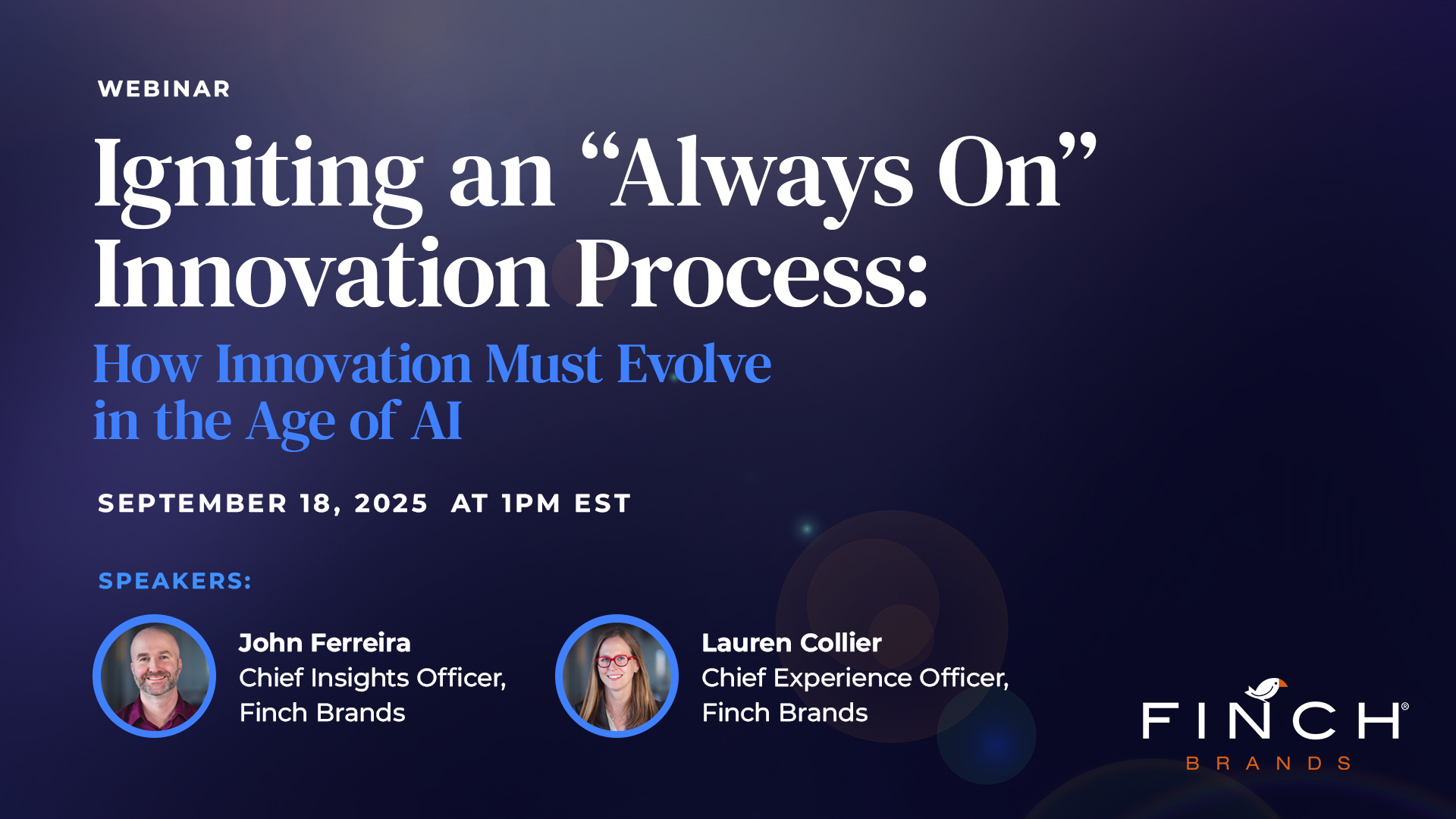Rebranding Strategies for M&A (A Summary of the M&A Branding Playbook Podcast)

Rebranding Strategies for M&A
The M&A Branding Playbook is Finch Brands’ fundamental resource for navigating the often challenging process of creating a brand strategy for companies pursuing mergers and acquisitions (M&A). We created this resource to help companies make data-driven decisions on rebranding strategies without relying on emotion or expediency.
The playbook is yours to download, but you may be interested in another way to learn about branding: The Real-World Branding Podcast. This podcast, hosted by Finch Brands President Bill Gullan, dives into various brand-building topics and real-world experiences from some of the greatest minds in the industry. It’s a good opportunity to get what you need to hear directly from the source.
We’ve also narrated the entirety of the M&A Branding Playbook on our podcast. This post will give you a taste of what you can gain from listening, but go ahead and download the full episode for the whole experience.
Section 1: Why Is Branding So Important?
A brand is how a company defines and expresses itself to its internal and external audiences. This expression is critical in M&A scenarios, when two or more companies must navigate differences in internal culture and external positioning to create something bigger and better.. Your team will also need to assess a range of company, category, and target audience dynamics in building a strategy that activates potential while managing risk.
When making branding decisions too quickly (or too slowly), it can significantly increase your chances of M&A value destruction. Unfortunately, we find branding topics to be frequently overlooked or dealt with in a way that overlooks critical nuances.
The playbook makes clear that a proper rebranding strategy is essential for establishing what comes next in the life of the business.
Section 2: Start with Listening
To initiate an effective data collection process, you must practice active listening. You should look at many data sets and capture, manage, and filter input from employees and external stakeholders. A solid data set will help your company get behind a forward-thinking brand direction. Listening also ensures that decision-makers are well-informed about brand perceptions, risks, and opportunities and that internal audiences feel heard within the integration process.
An excellent source of information is customer insights programs. Customer insights can help you:
- Understand the relative strength and meaning of existing and acquired brands.
- Assess opportunities and risks of possible brand changes.
- Document areas of strengths and weaknesses in the customer journey.
- Expand the company’s point of view on the dynamics shaping the category and customer.
- Uncover additional unmet customer needs.
- Document competitor strengths and reputation.
- Road test messaging and other post-M&A directions.
Section 3: Make and Document Key Choices
With data in hand, you’re ready to start making some choices around the key ingredients of your go-forward brand. The most prevalent decisions include these brand elements:
- Architecture
- Personality
- Design
While each situation is different, there are four prevailing M&A brand alignment architecture strategies to consider post-transaction:
- No Change: Each brand in the M&A process continues to operate as if they were independent of one another.
- Fusion: All partners in an M&A integrate brand identity assets into a unified corporate identity.
- Stronger Horse: You elevate the more dominant brand while the other brand identities assets are (immediately or gradually) retired or used for other purposes.
- New Brand: All partners in an M&A work to create an entirely new brand identity.
A Note About Brand Design
Your chosen brand architecture will inform design choices and other rebranding marketing strategies. The new design should capture the ideology and spirit of your new, emerging identity. If you create a new name from a fusion or new brand model, that also offers an opportunity for a logo redesign to convey freshness and positive change.
Section 4: Build from the Inside Out
The best brands are built from the inside out. That means that priority should be given to rallying the internal team around core ideas – such as Purpose, Mission, and Values – as a way to educate and inspire those who serve the customer.
Key building blocks include:
- Purpose: Your why. Define your ambition. Your purpose is your brand’s north star—the ideal you can look to for inspired action.
- Mission: Your how. The mission should answer your brand’s who, what, and where and guide day-to-day decisions.
- Values: Key behaviors. These are important mindsets and ways of working that you elevate within your culture.
Section 5: Make It Real for Customers
Finally, after you’ve established your brand architecture, design, and core values, it’s time to focus on external activation. A strong focus should be on communicating to your customers how this change might affect them in the short term. Or more specifically, how this change will benefit them in the long run.
To do that, you must plan ahead and maximize your impact on day one. Your brand’s actual “day one” can be any day of your choosing, such as the day your website goes live or coincides with a key trade show. The goal here is to maximize the spotlight that comes with newness and frame the future of the brand and business.
That said, you don’t need to have all your branding elements in place by day one. The marketplace tolerates ongoing updates such as changing signage, product packaging updates, and other matters.
Get the Full Story on Apple Podcasts
We’ve outlined a lot in this summary so you may be able to craft the beginnings of a well-designed brand strategy with this information. But there’s more to it than what we’ve outlined here.
Listen to the full podcast episode for deeper insights into our M&A Branding Playbook. Finch Brands has years of experience as a rebranding agency, and the insights we outline in the podcast can make the difference between success and failure for M&A rebranding.
If you have questions, don’t hesitate to give us a call. We’re here to work with you.






